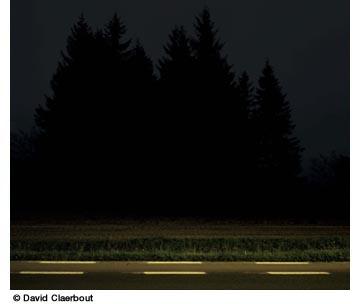David Claerbout
dal 23/1/2003 al 8/3/2003
Segnalato da
23/1/2003
David Claerbout
Hauser & Wirth, Zurich
The suggestive power of the compositions and the strong presence of the images in Claerbout's work leave a lasting impression enhanced by the physical experience of space and time that is generated in the process of perception. These works seem to call on the viewer to take part in an active dialogue.

David Claerbout
In his first solo exhibition in Switzerland, David Claerbout (b. 1969)
presents new work at the Galerie Hauser & Wirth. The Belgian artist has
reached a wider international audience with his contribution to the 2nd berlin
biennale and his solo exhibition at the Kunstverein Hannover, which offered a
comprehensive view of one of the most striking oeuvres in current video art.
Claerbout situates his work between the worlds of photography and film,
investigating this intermediary area in concise and impressive installations.
Entering the first room of the exhibition, the viewer steps into darkness.
After a few moments, during which our eyes are getting used to the dark, we
make out pictures on the walls, standing out from their opaque surroundings.
The pictures - photographic transparencies in lightboxes - are of landscapes,
shot in a moment that lies somewhere on the borderline between day and night,
between civilisation and nature. Slowly, we identify fluorescent traces of
motorway markings in the foreground, then a strip of grassland, and behind it
gradually emerges the outline of a group of monumental trees that never really
come out of the dark but remain more of a suspicion. The name of lightbox is
almost an exaggeration when applied to these picture sculptures, since only a
fraction of the light given out by the fluorescent tubes comes through. The
installation of the five 'Nightscape Lightboxes' in a dark room that recreates
a nocturnal situation forces the viewer to take a longer, more 'real' look.
Proceeding to the next room, the viewer finds a video installation called
'Rocking chair', with a projection screen in the centre of the space. It shows
a woman sitting in a rocking chair on the veranda of her house. The video
image seems nearly static, with movements virtually imperceptible and the
figure in the chair rocking back and forth almost in slow motion. Stark
chiaroscuro lighting accentuates the rigid geometrical structure of the image.
The projection screen stands free in the room, so the viewer can walk around
it. Going around to the other side of the screen, you find yourself 'inside'
the house, as it were. The woman is seen from behind, and the moment you walk
over to the other side, the rocking chair stops moving and the woman turns her
head to one side ever so slightly, as if she felt the presence of the visitor
behind her back and was now listening to the footsteps. After a moment's
pause, she returns to her original position and looks out into the landscape
that becomes visible for the viewer around the outline of the woman. The
natural world outside is bathed in sunlight, so that the massive figure stands
out from the brightness in sharp contrast. The static quality of the
artificially slowed-down images and the sheer size of the screen, which
monumentalises the figure of the woman, add to the impression of staginess and
theatricality produced by the image. The screen for the projected image
becomes a screen for our imagination. The active involvement of the viewer in
the image - the movement to the other side of the screen is registered by
sensors that set off the woman's head movement - creates a tension that can
only - perhaps - be resolved in the imagination of the individual.
The final work in the show titled 'Mist over a Landscape' feels like a
reversal of the 'Nightscape Lightboxes'. While the latter is an imitation of
night, this work recreates sunlight. A photograph, taken in early morning, of
a misty landscape hangs in the room. From behind a theatre spotlight throws a
sharp light on the upper edge of the image, with the result that it looks like
sunlight illuminating the landscape. The viewer is blinded by this excess of
light, and consequently only make out the image with difficulty.
The suggestive power of the compositions and the strong presence of the images
in Claerbout's work leave a lasting impression enhanced by the physical
experience of space and time that is generated in the process of perception.
These works seem to call on the viewer to take part in an active dialogue. As
for the things that do not enter the picture - here it is up to each viewer to
tell the end or the beginning of the story.
Opening: 24 January 2003, 6 pm
Gallery hours: Tue-Fri 12-6 pm, Sat 11 am-4 pm
Forthcoming exhibition: Richard Jackson, 22 March to 10 May 2003
Galerie Hauser & Wirth
Limmatstrasse 270 CH-8005 Zurich



